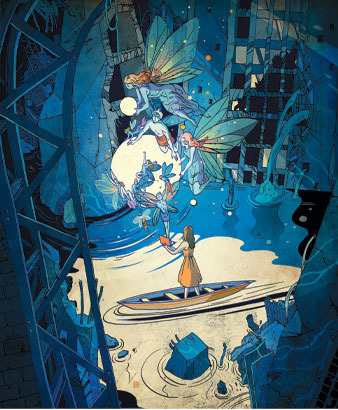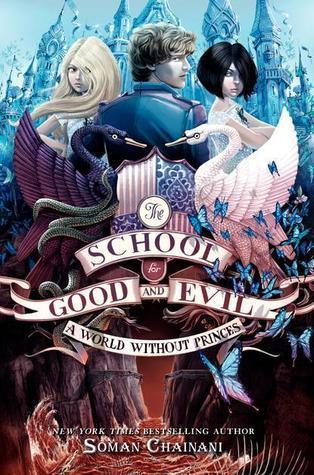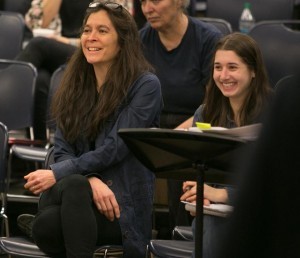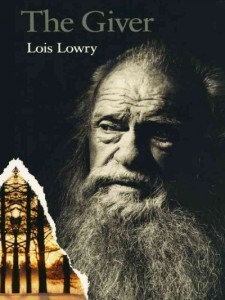Maria Tatar's Blog, page 13
June 25, 2014
“Telling Folk Heroes from Monsters”
Chris Wallace reviews “Internet’s Own Boy” and identifies hackers as modern-day tricksters.
If tricksters are among us, they are probably online, in the digital forest where morally ambiguous “gray hat” hackers and bands of pranksters like Anonymous roam as if they were Robin Hood and his Merry Men. In films, at least, the hacker appears as a kind of complicated folk hero.
http://www.nytimes.com/2014/06/22/movies…
I made a similar point in a blog post for the New Yorker, when writing about Lisbeth Salander in The Girl with the Dragon Tattoo. In a world that enforces boundaries by technological means, Lisbeth Salander enjoys unparalleled freedom and mobility, mirroring computers, tapping telephones, and deactivating alarms, “leaving the collective magic powerless,” as Lewis Hyde so aptly tells us in his book Trickster Makes This World. An expert at “unlawful data trespassing,” as Lisbeth puts it, she leaves “no traces” and is able to outwit even top security consultants. As it happens, Lisbeth is most often on the wrong side of the law but on the right side of justice. http://www.newyorker.com/online/blogs/bo…
I’m not sure if I agree with Wallace’s opening argument: Woe to the once-hallowed trickster. In ancient mythologies, the riddler-thief and agent of change held a position of prestige. Now, we don’t know what to do with him. In our two Americas, we do black and white, either/or, with us or against us. The trickster is in between, both and neither, a character on the fringes.
We’ve never know how to deal with “him,” because Hermes, Loki, Anansi, Coyote, and Brer Rabbit embody and enact all the contradictions imposed on us by civilization. And now a skinny hacker from Stockholm has added further complications.
June 14, 2014
Neil Gaiman’s next new book inspired by “Hansel and Gretel”!
 http://www.nytimes.com/2014/06/14/books/…
http://www.nytimes.com/2014/06/14/books/…
Here’s what Neil Gaiman says about his next book:
I’ve got a new book coming out in November — a version of “Hansel and Gretel.” I had been fascinated by “Hansel and Gretel” since I was 5, hearing the story on a radio adaptation. And I remember getting really irritated in my 20s, around the time when those books on psychological interpretations of fairy tales started coming out. I would read these things explaining that “Hansel and Gretel” was all about sex. From my perspective, it’s about a famine that is bad enough that the parents are basically having to go, “O.K., we can abandon our children, and we parents have a chance of living, or we all four die because there is no food.” It’s about leaving clues that are then eaten. It’s about a gingerbread house, the desire for sweets.
He sure got that right.
June 1, 2014
The Wild Child of Yesteryear

Does the overprotected child articulate values we are proud of in 2014? Nothing is easier than judging other peoples’ parenting, but there is a side of contemporary American culture — fearful, litigious, controlling — that we do not brag about but that we reveal in our child rearing, and that runs contrary to our self-image as an open, optimistic nation. Maybe this is why sheltering parents come in for so much easy criticism: A visit to the playground exposes traits we would rather not recognize.
http://www.nytimes.com/2014/06/01/opinio…
April 20, 2014
Soman Chainini’s WORLD WITHOUT PRINCES
Just started reading the second installment of THE SCHOOL FOR GOOD AND EVIL, and I’m looking forward to April 30, 6pm, when Soman Chainini will be at the Harvard Coop to talk about his book. He will be in conversation with Gregory Maguire, and I will introduce and “moderate” the conversation.
I love the playlist for the first volume, which reminds me how much fun he is having with the trilogy.
The School for Good and Evil Reading Playlist by Soman Chainani
One of my goals in writing The School for Good and Evil was to give the book new energy from chapter to chapter, so you never feel like you’re in the same place twice. For each of the 30 chapters, I’d pick a book (sometimes a piece of music or an article) that I remembered loving as a child or adolescent and obsessively reread it until I put the chapter to bed. None of the books had explicit links to The School for Good and Evil – in fact, most of them aren’t even fantasy. But in the end, I realized I had a ‘playlist’ to my own imagination, at once light and dark, good and evil.
Compiled between April 2011 through March 2012
1. The Princess & The Witch
Mary Poppins, P.L Travers.
2. The Art of Kidnapping
Peter Pan, JM Barrie
Music Video: “Oh, Father” (Madonna, Like a Prayer)
3. The Great Mistake
Alice’s Adventures in Wonderland, Lewis Carroll
The Bad Beginning, Lemony Snicket
4. The Three Witches of Room 66
The Talented Mr. Ripley, Patricia Highsmith
The Steampunk Bible, Jeff Vandermeer
5. Boys Ruin Everything
Interview with a Vampire, Anne Rice
6. Definitely Evil
The Witches, Roald Dahl
7. Grand High Witch Ultimate
The Magicians, Lev Grossman
8. Wish Fish
9. 100% Evil
The Magician King, Lev Grossman
10. Bad Group
The Hobbit, JR Tolkien
11. The School Master’s Riddle
The Golden Compass, Philip Pullman
12. Dead Ends
Brideshead Revisited, Evelyn Waugh
TV: Downton Abbey, Season 1
13. Doom Room
14. The Crypt Keeper’s Solution
Room with a View, EM Forster
15. Choose Your Coffin
16. Cupid Goes Rogue
Midnight in the Garden of Good & Evil, John Berendt
17. The Empress’ New Clothes
18. The Roach and the Fox
Auntie Mame, Patrick Dennis
Auntie Mame Around the World, Patrick Dennis
Madonna Style, Carol Clerk
Music Video: “Express Yourself,” Madonna
“Viva Donatella,” Lauren Collins. New Yorker. 9.24.07
19. I Have a Prince
Lord of the Flies, Wiliam Golding
20. Secrets and Lies
21. Trial by Tale
And Then There Were None, Agatha Christie
22. Nemesis Dreams
The Secret History, Donna Tart
Music Video: “Bedtime Story,” Madonna (Bedtime Stories)
23. Magic in the Mirror
The Line of Beauty, Allan Hollingshurst
24. Hope in the Toilet
25. Symptoms
The Picture of Dorian Gray, Oscar Wilde
TV: Downton Abbey, Season 2
26. The Circus of Talents
27. Promises Unkept
Blindness, Jose Saramago
Music Video: “Frozen,” Madonna (Ray of Light)
28. The Witch of Woods Beyond
The Crucible, Arthur Miller
Music Video: “What It Feels Like For a Girl,” Madonna (Music)
29. Beautiful Evil
30. Never After
The Alienist, Caleb Carr
Music Video: “Falling Free,” Madonna (MDNA)
April 14, 2014
Adventures at the Harvard Bookstore and more in an interview with Dan Morrell
 http://denisonmagazine.com/2014/features/spellbound/
http://denisonmagazine.com/2014/features/spellbound/
And here’s what they left out:
Maria Tatar has become so familiar with fairy tale characters through her work, that it’s easy to imagine them walking among us in modern times. Here, according to Tatar, are the six fairy tale characters you’re likely to meet in everyday life.
Gretel: Shy and introverted, but when push comes to shove, she gets the job done. Has a sweet tooth that is out of control, but she still looks like she needs a sandwich. Hates cooking. Very loyal with strong family ties. Has read The Hunger Games and The Girl with the Dragon Tattoo at least 10 times and is a big fan of Jennifer Lawrence and Rooney Mara.
Frog Prince: Sweet guy who is always ready to lend a helping hand. Tends to overshare and can become clingy at times. Willing to change for the right woman. Big supporter of sustainability movements and eco-friendly solutions.
Goldilocks: You know her. Ben Bernanke has a big crush on her, as does almost every economist. She may be high-maintenance, but she’s the chick who knows exactly what she wants and, for her, size does matter. Runs several marathons a year and is training for a triathlon.
Anansi: Prankster who is full of himself. Close to setting Guinness world records on pizza consumption, burgers, and shakes. Hard to tell when he is serious, when he is joking—has a poker face. Chick-magnet of sorts but toxic dating material.
Rumpelstiltskin: Never gives out his real name on a first date. Very secretive, especially about why he always looks exhausted—claims to be working nights at some kind of dull job. Don’t make any bets with this guy—he always has an angle.
Jack: Still living in his mother’s basement, even though he’s loaded. Distinctly metrosexual but talks constantly about returning to the land—growing things, raising chickens, milking cows. Hobbies include rock climbing and selling stuff on eBay.
March 29, 2014
A New “Finding Neverland”
The American Repertory Theater’s 2014-15 season, consisting entirely of world premieres, will begin this summer with the musical “Finding Neverland,” about “Peter Pan” playwright J.M. Barrie.
Although it is based on the 2004 film of the same name, “it’s a completely new production with an entirely new score, entirely new script,” ART artistic director Diane Paulus, who is directing the show, said by phone from New York.
http://www.bostonglobe.com/arts/theater-…
March 21, 2014
The Brothers Grimm at Cumberland Lodge
 http://www.cumberlandlodge.ac.uk/Prog...
http://www.cumberlandlodge.ac.uk/Prog...
Can Stories of Abuse Build Healthy Societies?
Starts on
24/03/2014
at
10:00
Ends on
25/03/2014
at
15:30
 Add this event to your calendar
Add this event to your calendarThe Brothers Grimm regarded their tales, many of which are violent and disturbing, as character-building. Others see them as dangerous and harmful; it was even argued that they fuelled Nazism. This two day multi-disciplinary conference brings together a wealth of expertise to consider the value of storytelling, and in particular whether the reworking of traditional tales by the Brothers Grimm and others can be a force for good. The conference will explore issues including psychotherapy and child abuse, and the impact of storytelling through literature, cinema, theatre, and music.
Speakers confirmed to date
Nick Bicât, composer
Mary Leay, musician
Karen Lury, Professor of Film and Television Studies, School of Culture and Creative Arts, University of Glasgow
Edmund Newell, Principal, Cumberland Lodge
Philip Ridley, writer and film-maker
Jeany Spark, actress (subject to availability)
Tim Supple, theatre director
Maria Tatar, John L. Loeb Professor of Folklore and Mythology, Harvard University
Judith Trowell, child and adolescent psychiatrist; Co-founder, Young Minds
Salley Vickers, novelist
March 20, 2014
THE GIVER makes it to the big screen, at last
If you click on The Giver, right above, you will get the trailer.
How many big names can you pack into one Hollywood film? Fortunately, it looks like a great cast.
If you are near Charlottesville, Virginia, this weekend run, don’t walk, to this event:
An Afternoon with Lois Lowry and Kathryn Erskine: A Twentieth Anniversary Event Sun. March 23rd, 2014 – 2:00 PM – See more at: http://www.vabook.org/site14/program/det…
and listen to the great Michael Sims as well, on Thoreau. Wish I could be there for both events!
http://www.vabook.org/site14/program/det…
March 16, 2014
Christopher Myers and Walter Dean Myers on the Apartheid of Children’s Literature
http://www.nytimes.com/2014/03/16/opi...
Walter Dean Myers writes:
But there was something missing. I needed more than the characters in the Bible to identify with, or even the characters in Arthur Miller’s plays or my beloved Balzac. As I discovered who I was, a black teenager in a white-dominated world, I saw that these characters, these lives, were not mine. I didn’t want to become the “black” representative, or some shining example of diversity. What I wanted, needed really, was to become an integral and valued part of the mosaic that I saw around me.
Books did not become my enemies. They were more like friends with whom I no longer felt comfortable. I stopped reading. I stopped going to school. On my 17th birthday, I joined the Army. In retrospect I see that I had lost the potential person I would become — an odd idea that I could not have articulated at the time, but that seems so clear today.
My post-Army days became dreadful, a drunken stumble through life, with me holding on just enough to survive. Fueled by the shortest and most meaningful conversation I had ever had in a school hallway, with the one English teacher in my high school, Stuyvesant, who knew I was going to drop out, I began to write short columns for a local tabloid, and racy stories for men’s magazines. Seeing my name in print helped. A little.
Then I read a story by James Baldwin: “Sonny’s Blues.” I didn’t love the story, but I was lifted by it, for it took place in Harlem, and it was a story concerned with black people like those I knew. By humanizing the people who were like me, Baldwin’s story also humanized me. The story gave me a permission that I didn’t know I needed, the permission to write about my own landscape, my own map.
During my only meeting with Baldwin, at City College, I blurted out to him what his story had done for me. “I know exactly what you mean,” he said. “I had to leave Harlem and the United States to search for who I was. Isn’t that a shame?”
When I left Baldwin that day I felt elated that I had met a writer I had so admired, and that we had had a shared experience. But later I realized how much more meaningful it would have been to have known Baldwin’s story at 15, or at 14. Perhaps even younger, before I had started my subconscious quest for identity.
And here’s Christopher Myers:
http://www.nytimes.com/2014/03/16/opinio…
Of 3,200 children’s books published in 2013, just 93 were about black people, according to a study by the Cooperative Children’s Book Center at the University of Wisconsin.
March 9, 2014
Ron Suskind: “Reaching My Autistic Son through Disney”
Years ago Simon Baron-Cohen wrote a book called Mindblindness: An Essay on Autism and Theory of Mind. He could not have imagined that Disney movies might be harnessed to teach autistic children about mental processes in their own minds and in the minds of others. Wallace Stevens told us that symbolic worlds help us visualize the real, and now it seems that they also provide a portal into minds.
Be sure to watch the video that accompanies the article–it makes the term moving pictures come alive.
When Owen was 3, his comprehension of spoken words collapsed. That’s clear from every test. But now it seems that as he watched each Disney movie again and again, he was collecting and logging sounds and rhythms, multitrack. Speech, of course, has its own subtle musicality; most of us, focusing on the words and their meanings, don’t hear it. But that’s all he heard for years, words as intonation and cadence, their meanings inscrutable. It was like someone memorizing an Akira Kurosawa movie without knowing Japanese. Then it seems he was slowly learning Japanese — or, rather, spoken English — by using the exaggerated facial expressions of the animated characters, the situations they were in, the way they interacted to help define all those mysterious sounds. That’s what we start to assume; after all, that’s the way babies learn to speak. But this is slightly different because of the way he committed these vast swaths of source material, dozens of Disney movies, to memory. These are stored sounds wecan now help him contextualize, with jumping, twirling, sweating, joyous expression, as we just managed with “The Jungle Book.”
Owen’s chosen affinity clearly opened a window to myth, fable and legend that Disney lifted and retooled, just as the Grimm Brothers did, from a vast repository of folklore. Countless cultures have told versions of “Beauty and the Beast,” which dates back 2,000 years to the Latin “Cupid and Psyche” and certainly beyond that. These are stories human beings have always told themselves to make their way in the world.
But what draws kids like Owen to these movies is something even more elemental. Walt Disney told his early animators that the characters and the scenes should be so vivid and clear that they could be understood with the sound turned off. Inadvertently, this creates a dream portal for those who struggle with auditory processing, especially, in recent decades, when the films can be rewound and replayed many times.
http://www.nytimes.com/2014/03/09/magazi…
I want to change the title of the NYT article to: “Reaching My Son through Disney”
And the book, Life, Animated, comes out in April. Creating the semblance of life from celluloid–animating–was always the goal of Disney films, and now we can discover how film, and art in general, animates us.
Maria Tatar's Blog
- Maria Tatar's profile
- 316 followers









